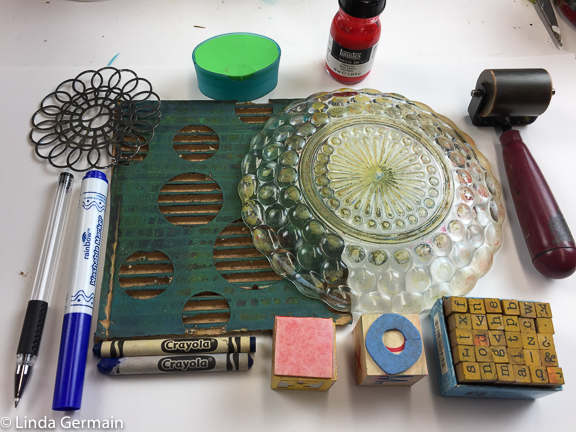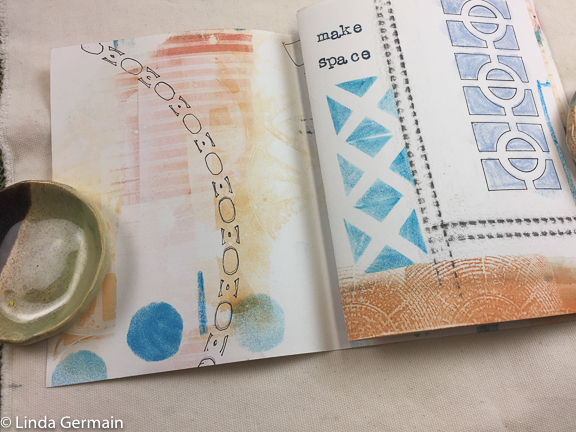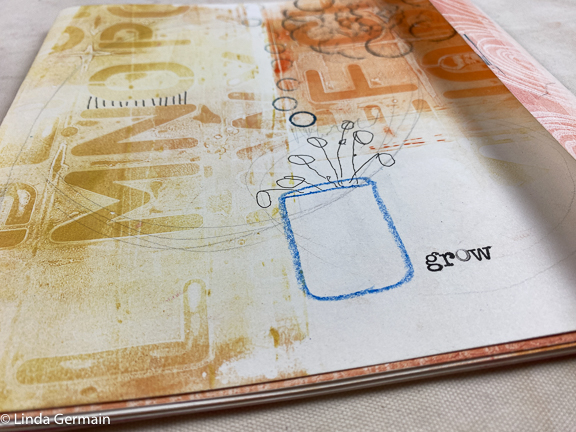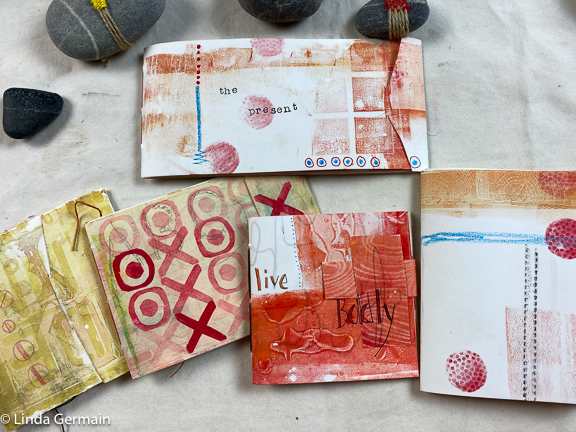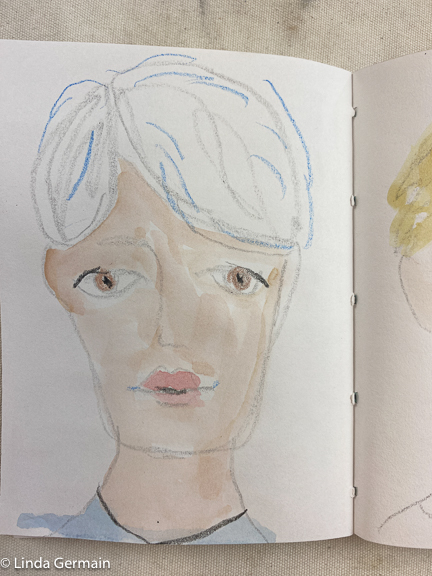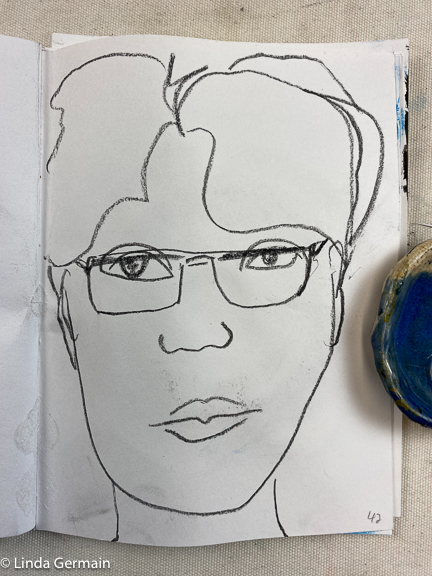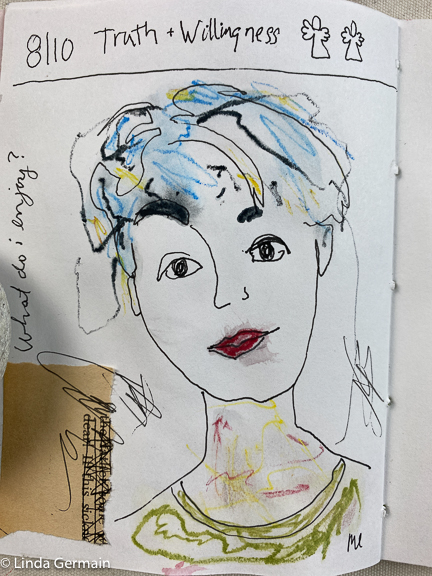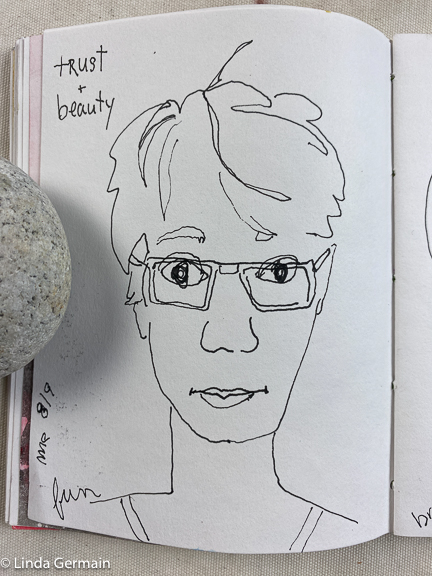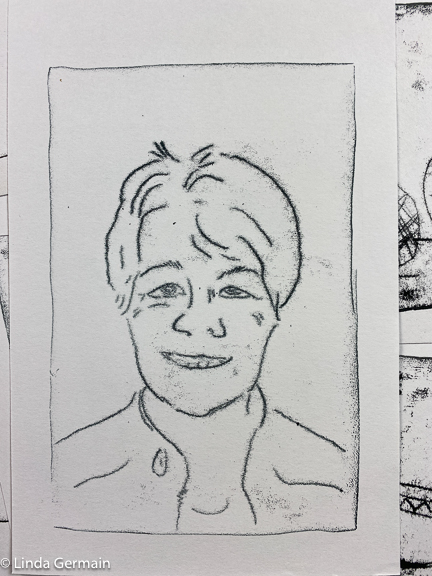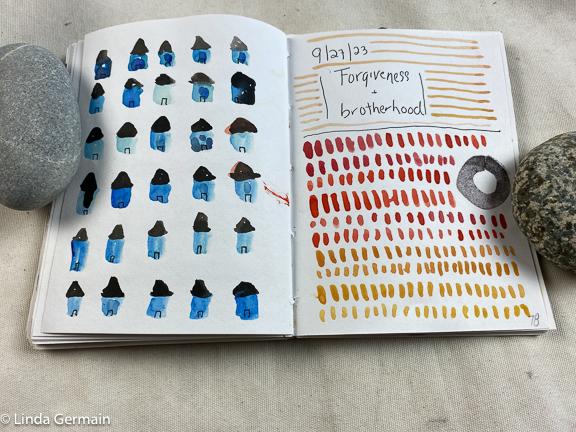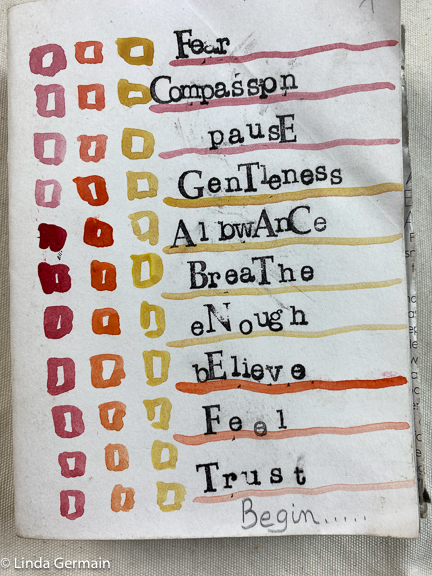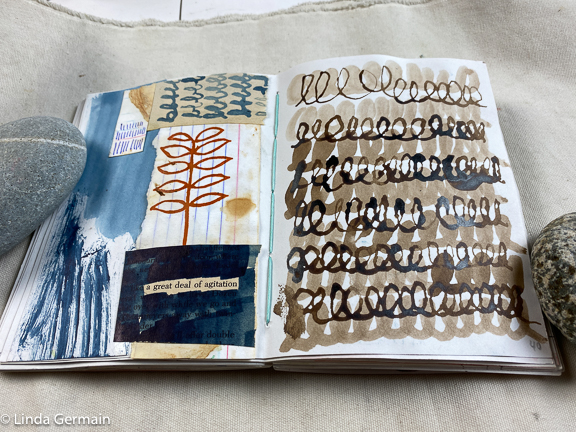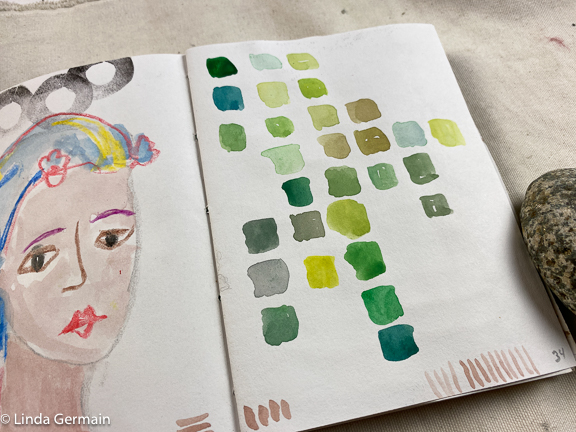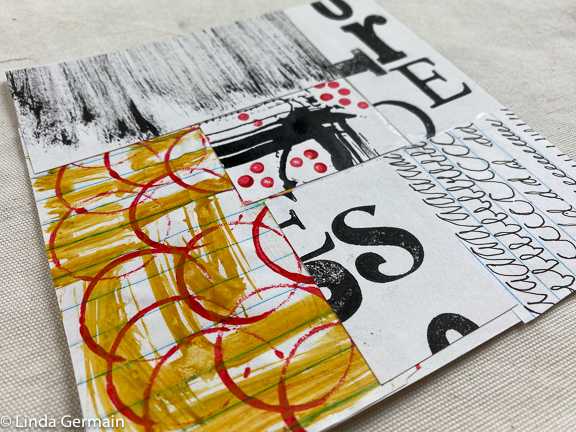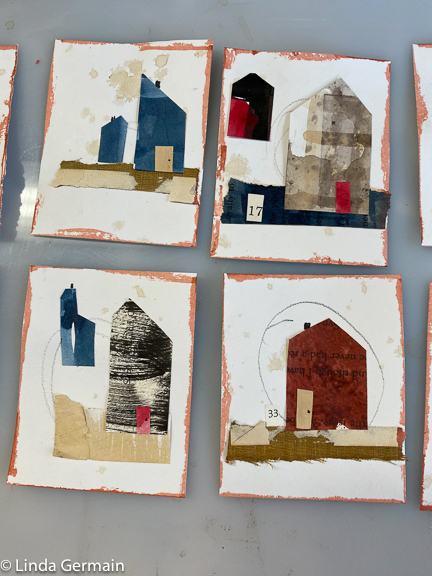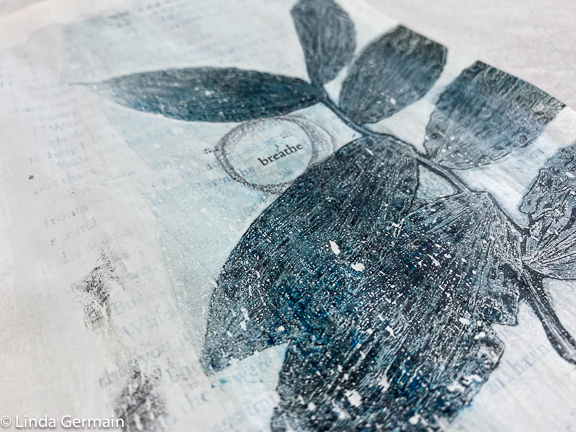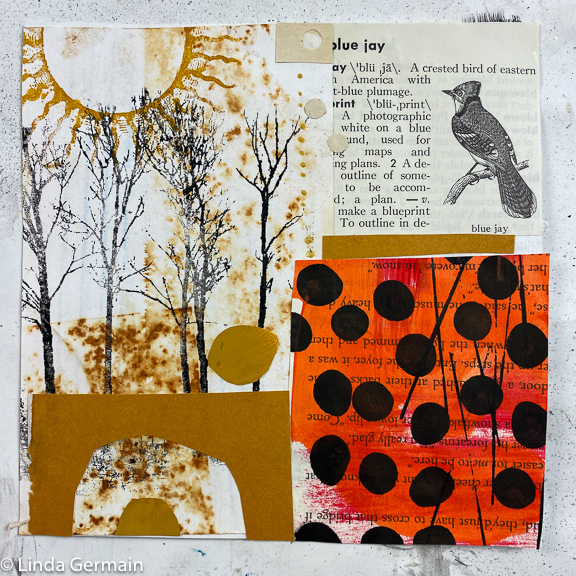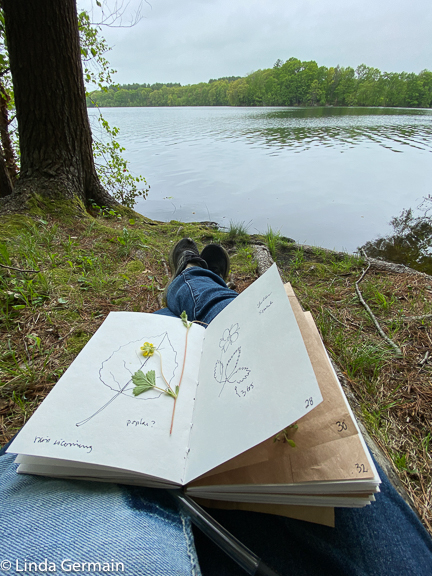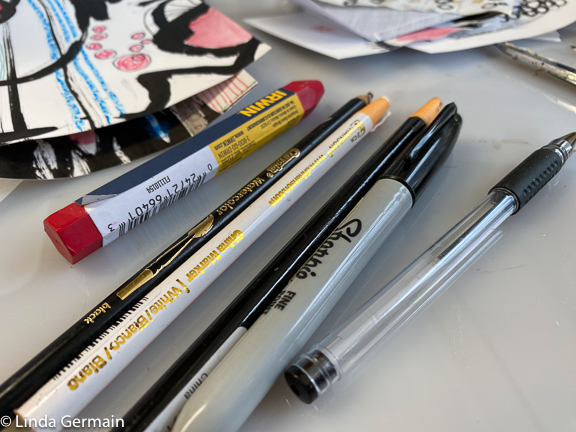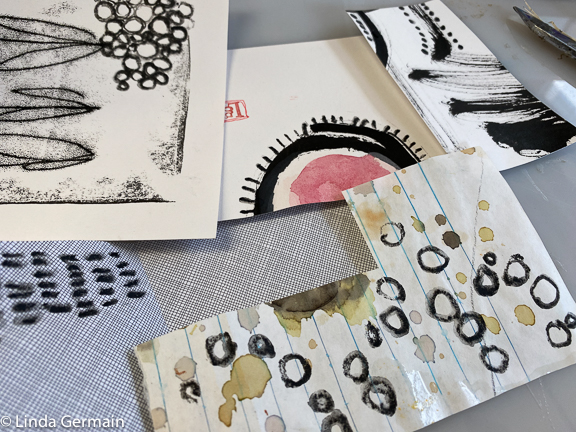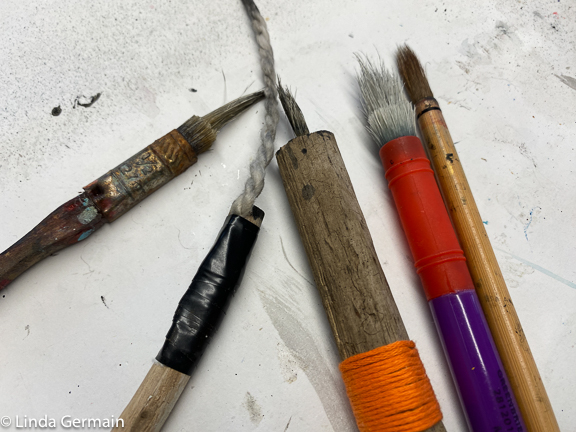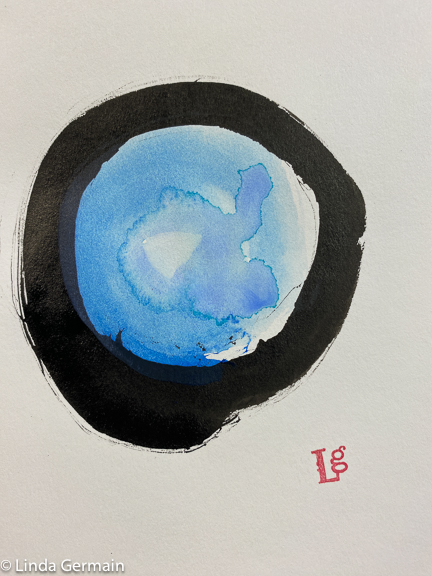Layers of marks – a story
I like to make marks with:
- stamping tools and the gelatin plate. The details can be amazing.
- a pencil/crayon and my non-dominate hand. The line can be raw and authentic.
- small hand made stamps. The patterns can be very stabilizing.
I combine these and a few other mark making techniques to make visual story books.
If you are curious about this approach to art making, then check out the details of the class Make Marks + Books.
This 7 lesson class is about exploring mark making and using a few simple printmaking techniques to make artist books. We will use a non-linear approach to layering and responding to the images. It is intuitive and yet guided by design principles, like variety and repetition.
Join me in the online class – Make Marks + Books. Give yourself the gift of time to explore.
Layers of marks – a story Read More »
